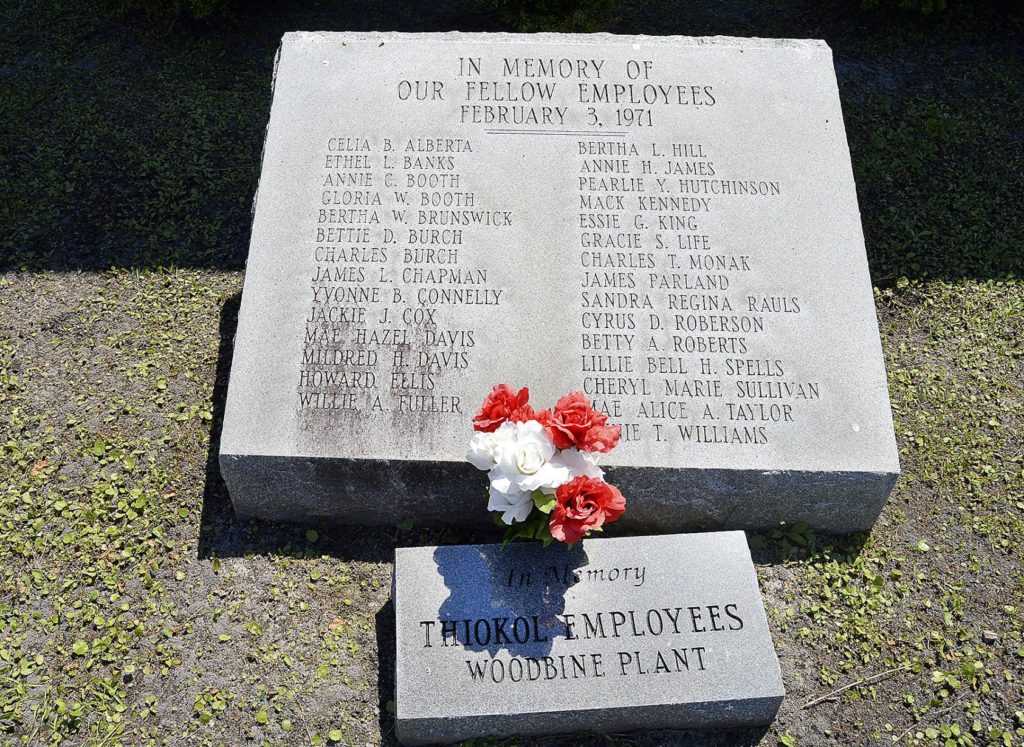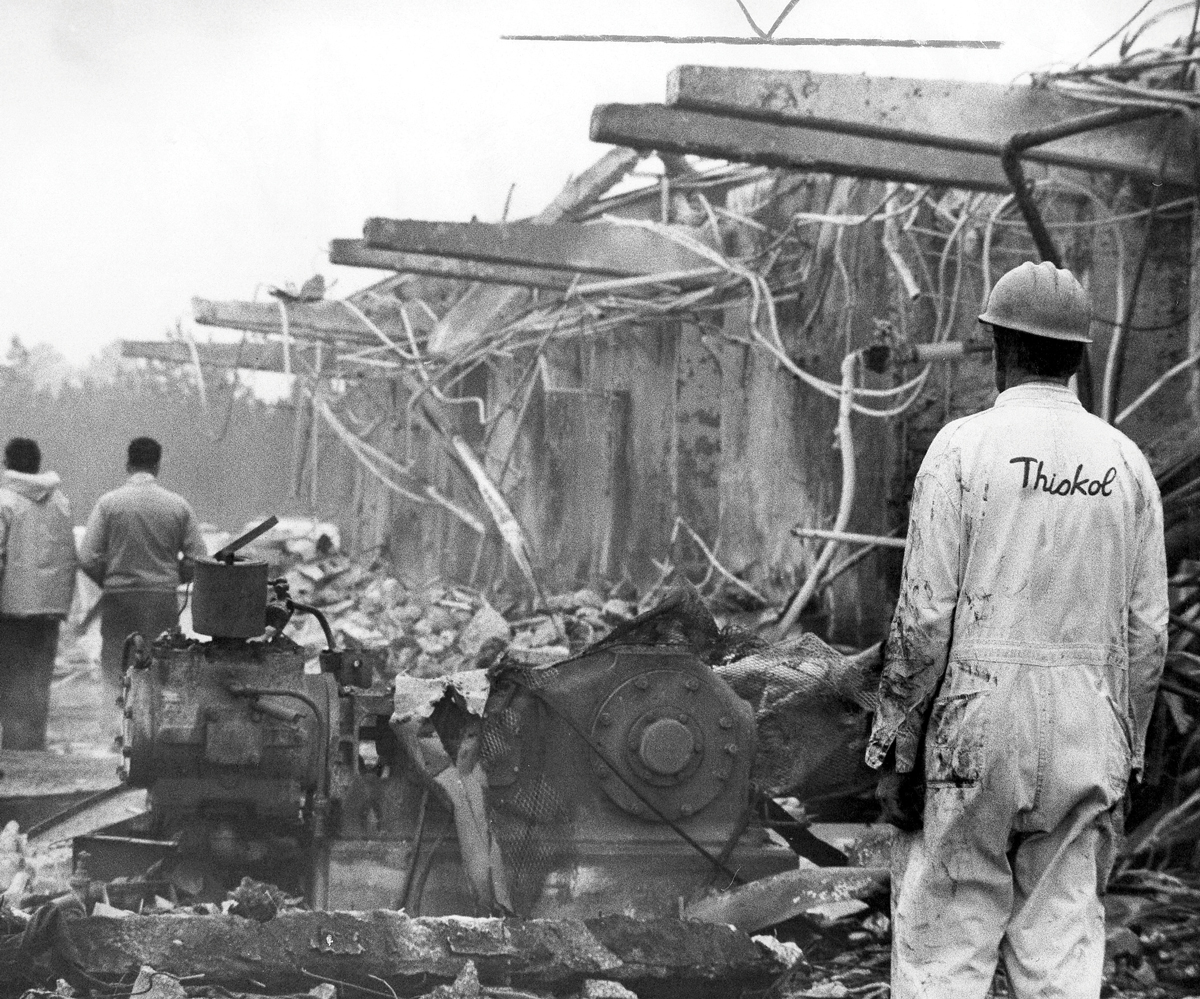Earlier this week, February 3, marked the 53rd anniversary of the Thiokol explosion. Coming just a month after passage of the Occupational Safety and Health Act, and almost three months before the founding of the Occupational Safety and Health Administration, the catastrophic explosion was one of this country’s most catastrophic and least known industrial disasters.
The Economic Policy Institute reminds us of the disasters and who was most affected.
On February 3, 1971, 29 workers were killed and more than 50 were injured during an explosion at the Thiokol Chemical Corporation Plant in Woodbine, GA – one of the worst, though lesser known, industrial accidents in U.S. history.
Most of the workers who lost their lives that day were Black Women. They were hired by Thiokol to make trip flares for the U.S. Army to use in the Vietnam War.
The Woodbine Thiokol plant was unique as a racially integrated workplace that also hired women. At $1.65/hour ($11.12/hour in 2023 dollars), those jobs paid more than domestic or agricultural jobs typically available to Black women in the South at that time, offering them and their families hope for a better life.
While it was a good thing that federal funds provided an economic boost to underserved communities, the explosion is a cautionary tale about the casualties of weak labor standards, inadequate plant safety regulations, and the shortcomings of the Southern economic development model.
The Woodbine Thiokol plant was unique as a racially integrated workplace that also hired women. At $1.65/hour ($11.12/hour in 2023 dollars), those jobs paid more than domestic or agricultural jobs typically available to Black women in the South at that time, offering them and their families hope for a better life.
Thiokol had a U.S. Army contract to manufacture 750,000 tripflares for use in the Vietnam War. Magnesium wasthe primary component in flares. The metal burns at a high temperature, and when confined, heat and pressure build up, causing a violent detonation.
One survivor remembered hearing singing that morning:
That’s what the men heard most mornings coming from Building M-132, the assembly line where women made trip flares for the war in Vietnam. It’s what they heard that morning, before someone inside M-132 yelled “fire.”
In minutes, this fire, unlike so many that had preceded it at the plant, turned into one of the worst industrial accidents in U.S. history. An explosion shattered windows more than 10 miles away. The sound carried all the way to Jacksonville.

The fire broke out at the work station where an ignition chemical was manually added to other chemicals prior to forming ignition pellets. Small fires were not unusual at the plant. Workers would just leave until the fire was extinguished. But this one was different, survivors remember, spreading to the cure room and a storage room — with 8,000 pounds of loose illuminants, 1,400 pounds of ignition pellets and more than 56,000 assembled flares.
During the 3–4 minutes after the fire began, all the workers were able to exit the building, but did not leave the area because they were unaware of a potential explosion. The survivors recalled two minor concussions before the enormous explosion when the contents of the “cure” and storage rooms detonated, followed by a huge fireball.
A supervisor in another building 300 yards away heard the fire alarm and walked outside. He had served in Vietnam, but said the explosion was worse than anything encountered in his war experience: “I watched B-52s drop 500-pound bombs. This is the biggest explosion I ever saw and I saw some pretty good-sized ones. When it blew, the explosion kept rolling out, rolling out. We sat there and watched the ball of fire coming toward us.”
The explosion and fire each killed, dismembered or injured dozens of employees. Bodies were hurled 400 feet and debris was found 4,200 feet (1,300 m) from building M-132, which was leveled Three other nearby buildings were severely damaged, and the fire engulfed nearby pine trees, which started a forest fire that eventually scorched 200 acres (0.81 km2). Windows were shattered 11 miles (18 km) from the site and the explosion was heard for 50 miles (80 km) around.
Twenty-four people were killed in the blast or died soon after. Five others later died from their injuries, primarily burns, for a total of 29 deaths. At least 50 individuals suffered debilitating injuries, including burns and limbs severed by the explosion.
Investigations performed by Thiokol and the Bureau of Alcohol, Tobacco and Firearms found that the hazard of the flare components were misclassified, material in the production building was stored all along the production line, creating a fuse leading to the cure room, and the building’s internal fire protection system was inadequate.

Horrible, preventable tragedy.
This is heartbreaking.